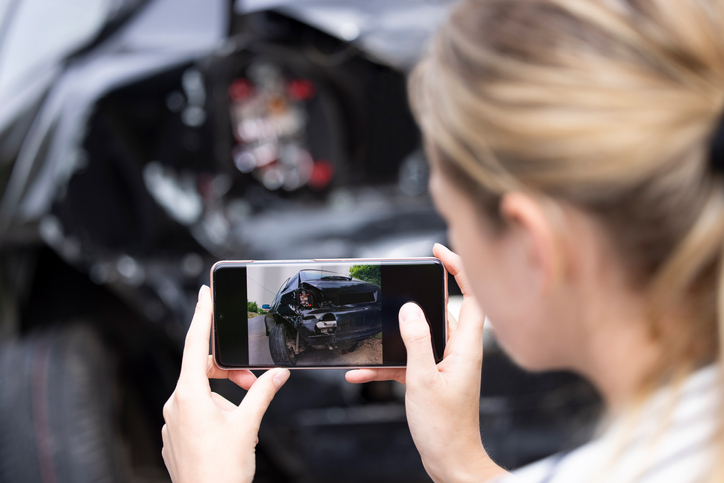According to the CDC, every year 3 million people across the United States are injured in a car accident. And, those accidents aren’t just scary—they’re costly, too. Last year, medical care costs and productivity losses tied to injuries and fatalities from car accidents was more than $75 billion.
Of course, no one wants to think about having a car accident. But, planning for the worst can often help lessen the blow, should an accident indeed occur. Plus, knowing a few tricks can help you ensure you’re able to capture the information and evidence you need to support a claim for compensation. Reviewing the following tips can help you substantiate your recollection of the accident and have any evidence you may need to challenge any opposing parties.
How to take photos after a car accident
If you’re uninjured and able, photographs and video evidence collected immediately after a car accident can help stitch together a complete picture of your accident—as well as capture the unbiased, “just the facts” outline of your incident.
1. Take as many photos as you can, and start as early as you can. As soon as you can, grab your phone and start taking pictures. If you find you’re not able to personally take the photos, ask a witness or bystander to step in and help.
2. Work the angles. When taking photos, try to capture as many different angles and perspectives as you can.
- Shoot pictures from multiple vantage points, various heights, and different distances.
- Take close-ups of damage to your car. As uncomfortable as it may sound, also take photos of injuries caused by the accident.
- Don’t forget to grab a few wide-angle pictures of the accident’s surroundings. Look for anything that may have contributed to the crash: Tree branches obscuring road signs, hazards near the roadway, construction work, and so on.
- If your phone’s camera has a panoramic option, try to get a 360-degree view of the accident site. Try to include street signs or prominent landmarks, any other vehicles or people involved in the accidents, damage to the car, any resulting debris in the roadway, and so on.
- Grab photos of the inside of your vehicle, too. If you’re able to shoot photos of the interiors of other cars involved in your accident, that can be helpful, too.
3. Photograph everything and everyone involved and on-site (note: Be sensitive and respectful). Try to get photos of all license plates and accident witnesses and anyone involved in the accident, with a keen eye towards any identifiers (e.g., car make, model, and license plate numbers). If you can respectfully do so, also try to take photos after any medical aid may have been administered to people involved in the accident.
An important safety note
While taking photos, be careful and cautious. What where you are stepping and be sure you’re safely away from emergency workers and vehicles. Also, make sure you’re out of the way from any traffic on the roadway.
Finding support after your accident
Our team at Wilson William can help you best manage your legal affairs following a North Carolina car accident. We can help you organize your photographic evidence and apply it to your claim, so you have a stronger chance of getting the compensation you deserve and the help you need covering any medical costs. Please give us a call today at (888) 253-4071. We look forward to helping you best manage your accident and recovery.
Note: This blog is intended to be informational only and shall not be construed as legal advice.


